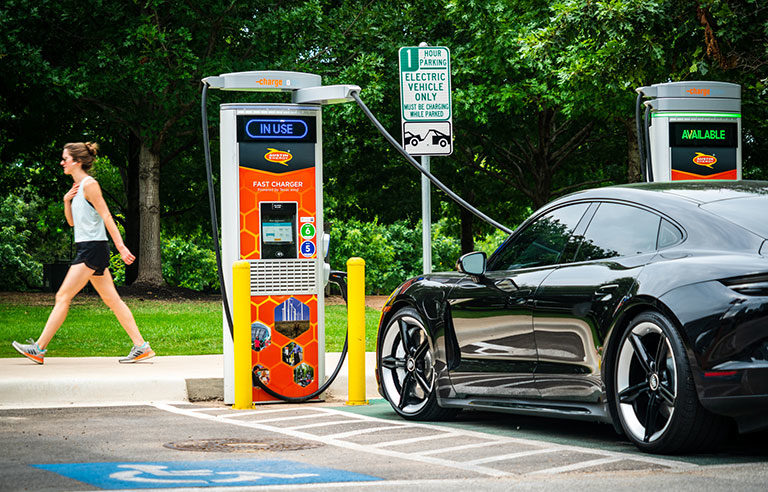Are EV chargers safe for people with pacemakers?

Photo: RoschetzkyIstockPhoto/iStockphoto
People who have cardiac devices such as pacemakers and defibrillators “can be reassured that charging electric cars with high-power chargers is safe,” European researchers are saying.
An estimated 1.2 million to 1.6 million people worldwide will have a pacemaker or defibrillator implanted this year, according to a press release from the European Society of Cardiology. Electric vehicle charging stations have “the potential to create strong electromagnetic fields” and create electromagnetic interference in implemented devices.
For the study, the researchers asked 130 patients with a pacemaker or defibrillator to charge four publicly available, fully electric vehicles and one test vehicle that could draw up to 350 kilowatts. The participants, who were mostly men and had an average age of 59, had their devices programmed to detect electromagnetic interference and placed the charging cable directly over their cardiac device to maximize any interference events. The researchers also monitored for any malfunctions in the devices, which were checked for changes in programming or damage. In all, 561 charges were performed.
“The researchers did not observe any adverse events caused by electromagnetic interference,” the release states. “Specifically, there was no inhibition of pacing in pacemakers nor inappropriate detection of rapid arrhythmias that might lead to painful shock therapy for patients with defibrillators.”
Study author Carsten Lennerz, of the German Heart Centre in Munich, was part of a previous look at potential electromagnetic interference in cardiac devices while driving EVs.
“The risk of malfunction of pacemakers and defibrillators is extremely low in this situation,” Lennerz said. “Sitting inside the car or standing next to the charging cable or charger is also safe. However, we would recommend not placing the charging cable directly over the cardiac device to maintain distance from the charging elements.”
The study was published in EP Europace, a journal of ESC.
Post a comment to this article
Safety+Health welcomes comments that promote respectful dialogue. Please stay on topic. Comments that contain personal attacks, profanity or abusive language – or those aggressively promoting products or services – will be removed. We reserve the right to determine which comments violate our comment policy. (Anonymous comments are welcome; merely skip the “name” field in the comment box. An email address is required but will not be included with your comment.)
